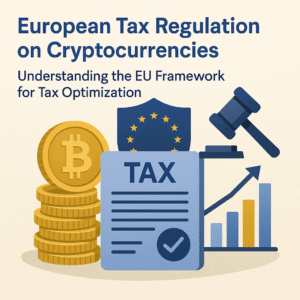Celo: How It Works, Price, How to Buy, and a Complete Analysis of the Mobile Crypto
Introduction & SEO Hook
Celo is a cryptocurrency designed to make decentralized finance accessible to everyone—especially via smartphones. This project stands out for its inclusive mission, mobile compatibility, and fast, lightweight blockchain. In this article, you’ll find a complete analysis of Celo’s price, technical operation, real-world use cases, and investment potential, with a clear pedagogical tone and professional insights.Key takeaways
Key Takeaways
- Celo’s price shows high short-term volatility, typical for Layer 1 cryptocurrencies
- Key growth drivers include mobile adoption, institutional partnerships, and local regulations
- The project has long-term potential, particularly in emerging markets
- Celo positions itself as a lightweight, mobile-first alternative to Ethereum or Solana
What Is Celo?
- Symbol: CELO
- Category: Layer 1 / Mobile-compatible blockchain
- Main Purpose: Enable fast, decentralized payments via smartphones
Plaforms to buy celo
How Does Celo Work?
Celo is a Layer 1 blockchain optimized for mobile use but built on solid and flexible technical foundations.Technology and Consensus
- Consensus Type: Proof of Stake (PoS)
- EVM Compatibility: Yes – Celo is fully compatible with Ethereum, allowing developers to deploy smart contracts using existing Ethereum tools (Remix, Truffle, Web3.js, etc.)
Technical Highlights:
- Lightweight architecture with fast synchronization
- Identity system based on phone numbers
- Native integration of stablecoins (e.g., cUSD and cEUR)
- Transaction fees can be paid in stablecoins
- Strong interoperability thanks to EVM compatibility
Utility of the CELO Token
The CELO token serves several critical functions:- Governance Token: Holders vote on protocol evolution proposals
- Staking: Participates in securing the network
- Stablecoin Support: Acts as a value reserve in the algorithmic stability of cUSD and cEUR
In Summary:
- Mobile-first infrastructure
- Energy-efficient PoS consensus
- Ethereum-compatible smart contracts and DApps
- Multifunctional CELO token: governance, staking, reserve
Project History and Origins
Key Dates and Milestones
- 2017: Celo Foundation launched by Rene Reinsberg, Marek Olszewski, and Sep Kamvar
- 2020: Celo blockchain mainnet goes live
- 2020: ICO raises over $10 million
- 2021: Launch of the Alliance for Prosperity (100+ partners including Deutsche Telekom, Opera, etc.)
- 2022–2024: Multiple DeFi applications deployed in the ecosystem (Ubeswap, Moola Market)
Geographic Focus
Celo is an internationally oriented project with offices in the U.S. and a strong focus on emerging markets in Africa, Latin America, and South Asia. To better understand the fluctuations of thecelo , visit our page on Celo: How It Works, Price, How to Buy, and a Complete Analysis of the Mobile Crypto – Cointobuy Find Best CryptoFounders and Team
Founding Team
- Rene Reinsberg: Former VP at GoDaddy, fintech and blockchain expert
- Marek Olszewski: PhD in Computer Science from MIT, ex-Google
- Sep Kamvar: Former Google engineer, creator of personalized Pagerank, MIT professor
What Makes [Nom cryptomonnaie] Unique?
Unique Features of Celo
Celo stands out due to its social mission, technical innovations, and practical mobile-first approach. Here are its main features:Innovative Use Cases
- Ultra-simple mobile payments Users can send crypto to a phone number even if the recipient doesn’t yet have a wallet. Once the Celo app is installed, they can claim the funds.
- Integrated stablecoins Unlike Ethereum or Solana, which rely on third parties for stablecoins, Celo has its own stablecoins (cUSD, cEUR) backed by algorithmic reserves and the CELO token.
- NGO adoption Several NGOs, such as Grameen Foundation, use Celo to distribute humanitarian aid in unbanked regions.
Mobile DeFi Ecosystem
- Ubeswap: Mobile-compatible decentralized exchange
- Moola Market: Lending protocol using cUSD
Unique Value Proposition
Celo isn’t trying to compete with Ethereum in terms of raw performance or complex smart contracts. Its strength lies in simplicity, low usage costs, and the ability to operate on low-powered phones with weak connectivity. This strategy enables Celo to target a vastly underserved population: the 2 billion unbanked adults worldwide.
Comparison With Other Blockchains
| Project | Mobile Compatibility | Native Stablecoins | Gas in Stablecoin | Mobile Identity |
| Celo | Yes | Yes | Yes | Yes |
| Ethereum | No | No (via third parties) | No | No |
| Solana | Moderate (faster) | No | No | No |
| Avalanche | No | No | No | No |
Conclusion and Future Outlook
Celo offers a clear and practical vision of blockchain: lightweight, fast, inclusive, and mobile-centered. Its technical infrastructure, decentralized governance, and socially impactful ecosystem make it a unique player in the crypto space. As decentralized payments gain traction in emerging markets, Celo is well-positioned for gradual adoption, particularly through its integrated stablecoins. Key factors to watch include governance evolution, scalability improvements, and real-world mobile app adoption.
FAQ – All About Celo
What is the CELO token used for?
The CELO token allows users to participate in network governance, secure the blockchain through staking, and maintain stablecoins like cUSD.Is it a good investment?
Celo has long-term potential, especially in emerging economies. Its strong tech foundation and mobile adoption make it a project worth monitoring.How is it different from Ethereum?
Celo is mobile-first, lighter, with native stablecoin integration and fees payable in cUSD. It targets a different audience than Ethereum.Where can I store CELO tokens?
You can store CELO in EVM-compatible wallets like Metamask, Ledger, or Valora (its mobile-optimized native wallet).Is the project secure?
Yes, Celo uses a Proof of Stake consensus and an open governance model. It has also undergone several security audits.Disclaimer :
Trading is risky and you may lose all or part of your capital. The information provided does not constitute financial advice and/or an investment recommendation
Top-Rated Platforms to Trade Crypto
Explore Our Financial Views on the Market
Crypto News & Insights
Digital Assets Forum 2026 returns to
The Digital Assets Forum (DAF), one of Europe’s most respected...
Blockchain and Cryptocurrency Conference (B2C’ 2025):
The Blockchain and Cryptocurrency Conference (B2C’ 2025) is scheduled for...
European Tax Regulation on Cryptocurrencies: Understanding
The regulation of the cryptocurrencies market in the European Union...













